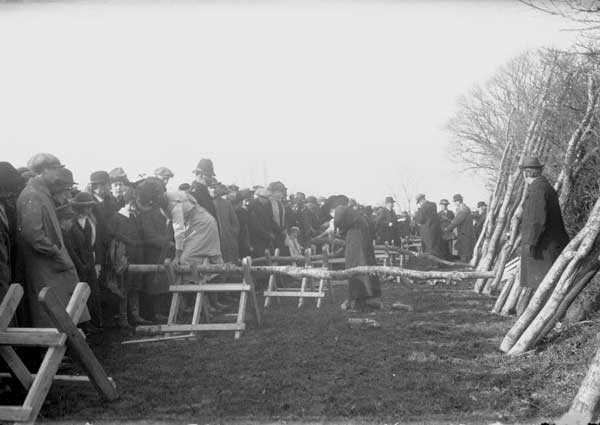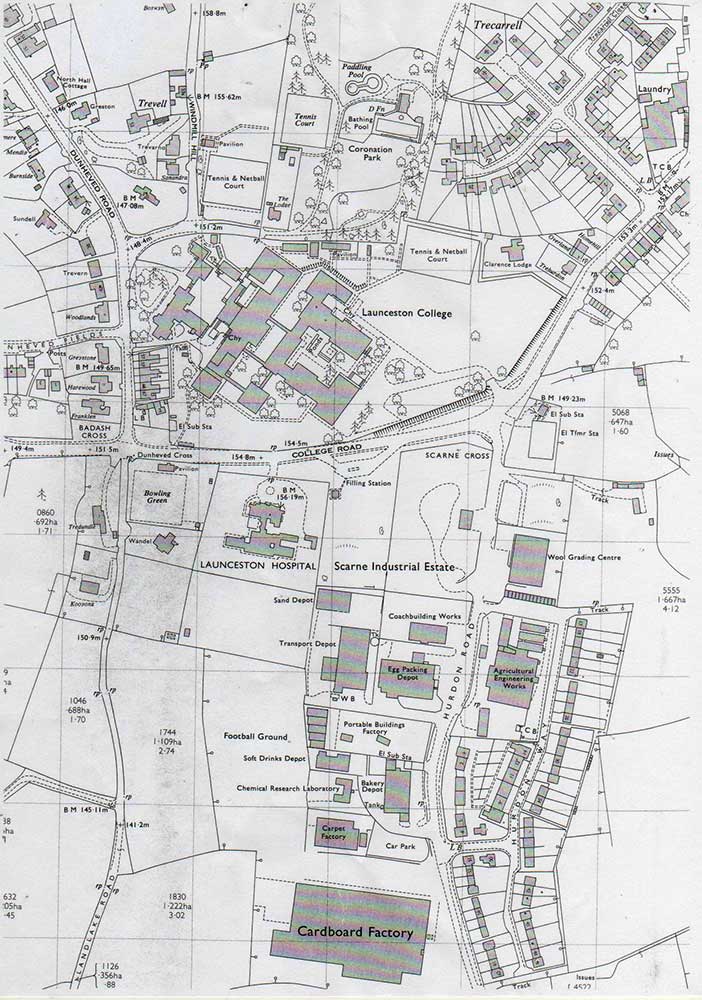.
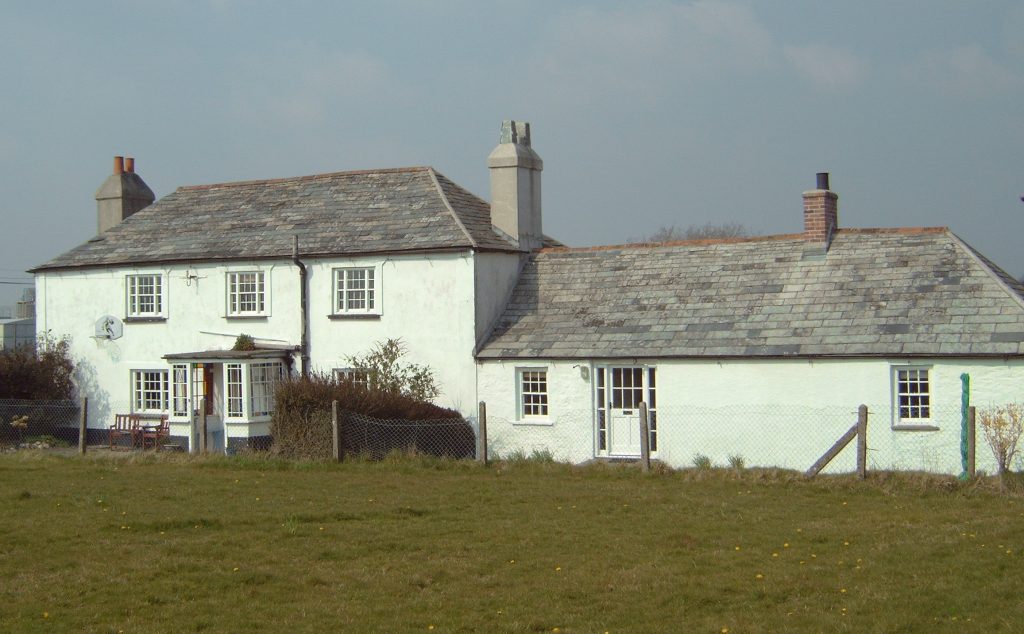
The first recorded mention of Scarne came in parchments dated from 1418 where it is named as Scardon.
On narrow slips of parchment, ” Bodmam and Gybbe 5th and 6th Hen. V.” (1418-19) are entered summaries of receipts and payments. One of these slips is as follows (trans.): Scardon : Assessment of the acres there, anno 5th and 6th Hen. V. John Cork, for two acres and half and a quarter, 3s. 8d. Richard Clowter, for one acre fifteen perches, 17 1/2d. ; Walter Proute, 1020 perches, is. 6d. (and so on, mentioning twenty-nine other occupiers and the sum paid by each.) Total acreage, 72a. 1r. 24 1/2p. Total of the money, 72s. 9 1/2d.
Further mention comes in the Borough expenses for 1446 with John Yurll of Scardon and again in 1467 for making a ditch between Scardon lands and Heye, 6d. In 1478 we see the land mentioned in the Borough Interrogatories;
Also theyr ys a nother pcell of the sayd comens, of fursse & hethe, called Skardon, whereuppon evy inhabytant, as well the ryche as the poore, may freely pasture onely wt iii beasts durynge the tyme that the said queletts are in tyllage, hayned & lopte : And uppon this Comens evy inhabytant of the Towne may, wt hoke & sythe, cut & carye awaye uppon his backe as muche fursse brake & hethe as hys nede shall requere, wtout paying any thyng for hyt, so that he cary none wt any carte or horse.
During the mayoralty of John Corke, in the 14th Henry VII. (1499), a jury of 24 burgesses revived and recorded certain ancient customs and ordinances of the Borough. Among these ordinances were, as follow:
2. That the common-grounds of the borough should be occupied in the void season as follows : Each alderman with ten beasts, each common steward with eight beasts, each portreeve with six beasts, and every commoner with two beasts, and no more respectively: And, as to Scardon, each alderman, burgess, and commoner might occupy with two kinds of beasts, so that sheep were none of them. The penalty for infringing these rules is 4d. for each beast.
Another mention is made in 1574 from extracts of the Account of Oliver Collyn, Mayor. Allowances are sought for “decayed rents of the tilladge of Scarne;” This is the last ancient mention of Scarne in the Borough records, but now named as Hay (Haye Common), the land formed part of the ‘Aftermoweth Lands’ (Aftermath) and by a statute of 24 George III. (1784-5) these rights were absolutely and finally vested in the mayor and aldermen of the borough for purposes of sale or lease. The seventh section of that statute recites and enacts as follows: Whereas there are, within the said borough, several Common Lands, called Great Pennygillam, Little Pennygillam, Hay, Windmill and Longland, the aftermowth of which hath of ancient right and custom, for time immemorial, belonged to and been enjoyed by the mayor, aldermen, and free burgesses of the said borough, and the widows of the deceased free burgesses, for depasturing all cattle (except hogs) from the time that the several crops of grass and corn are removed, to the twelfth day of January in every year ; but, for want of proper regulations, the said depasturage produces very little benefit or advantage to the several persons entitled thereto ; be it therefore enacted, that from and after the passing of this Act all the aftermowth of, or right of depasturing cattle on, the said common lands, shall be and is
hereby vested in the mayor and aldermen of the said borough for the time being for ever, free from all right and claim of common of pasture by the mayor, aldermen, and free burgesses of the said borough, and the widows of free burgesses ; in trust nevertheless to sell and dispose of the said aftermowth or right of depasturage, or otherwise to lease or demise the same, by writing, to any person or persons, for the best price or rent that can be reasonably had or obtained for the same, and to apply the money arising by such sale or rent, from time to time, in manner following (that is to say), in the first place, in making satisfaction and compensation to such persons, for their right and interest in the said aftermowth or right of depasturage as shall claim and demand the same ; and the remainder of the money arising by such sale or
rent to be applied towards repairing the church, repairing and lighting the streets, or any other purpose, for the ornament of the said town, or the convenience of the inhabitants.
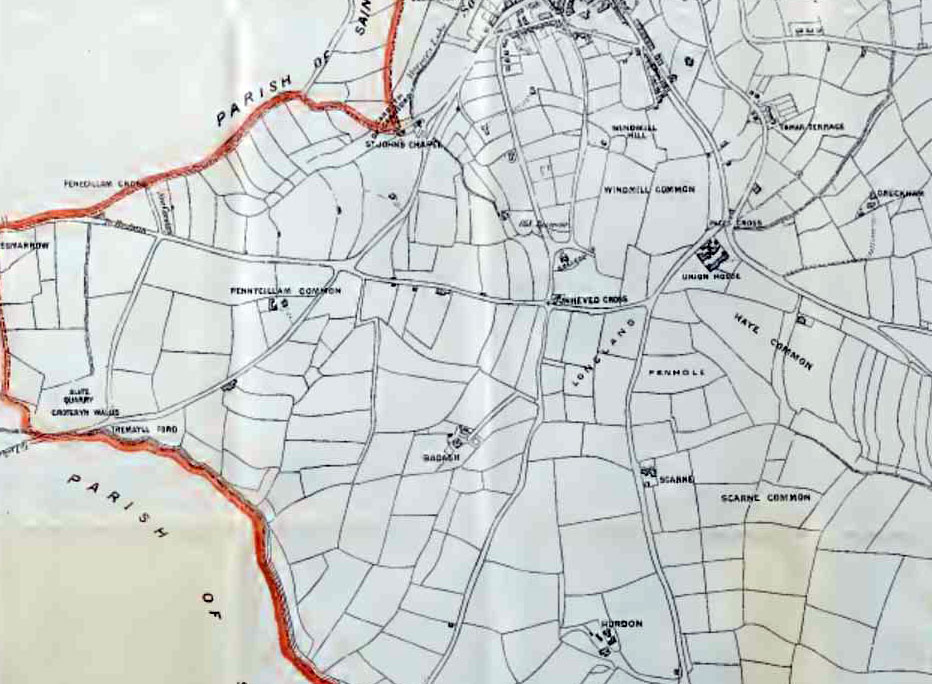
The chief part of the ” aftermowth ” and pasturage of the said common lands was sold soon after 1784, and the net proceeds of sale invested in the purchase of £1791 6s. 6d. Three per Cent. Consols, then called “The Aftermath Fund;” but in the year 1836, rents were paid to the Corporation in respect of the aftermath, not then sold, of Longland (£3 17s. per annum), and of two pieces on Hay Common (£1 12s. 6d.).
Courtesy of R & O Peter, A History of Launceston and Dunheved.
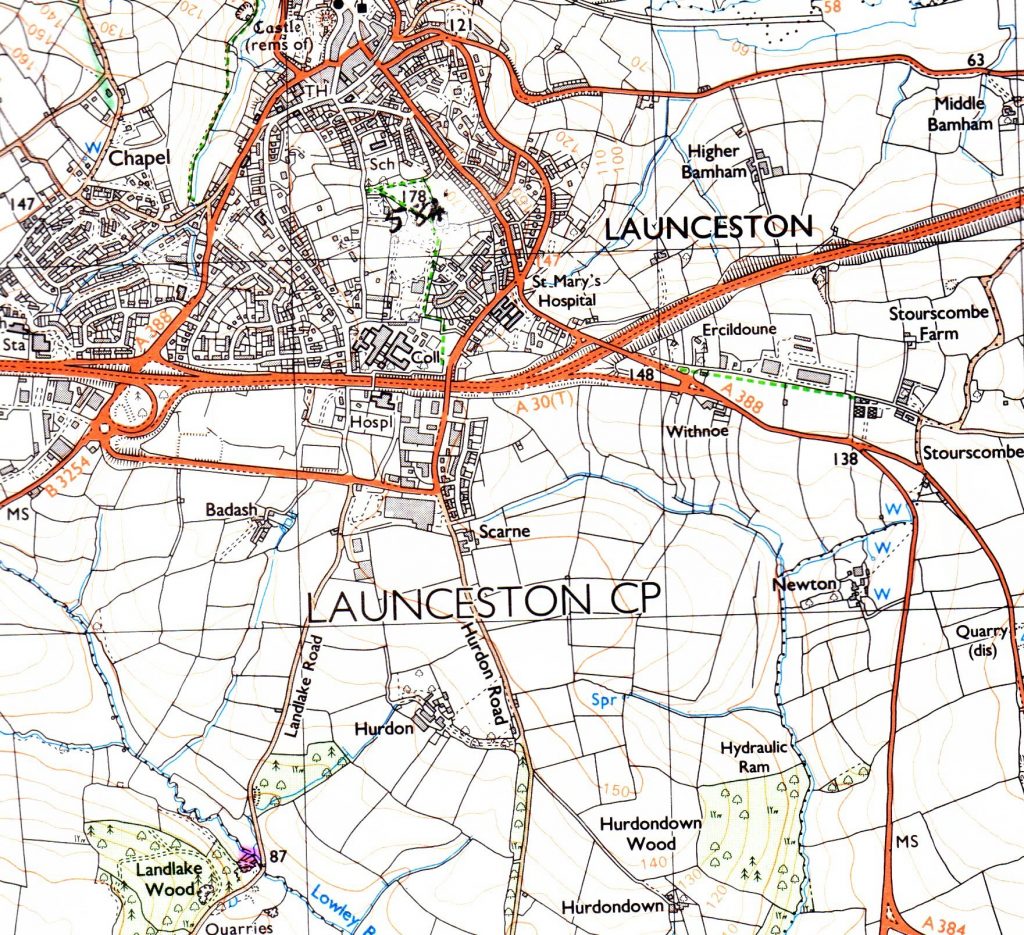
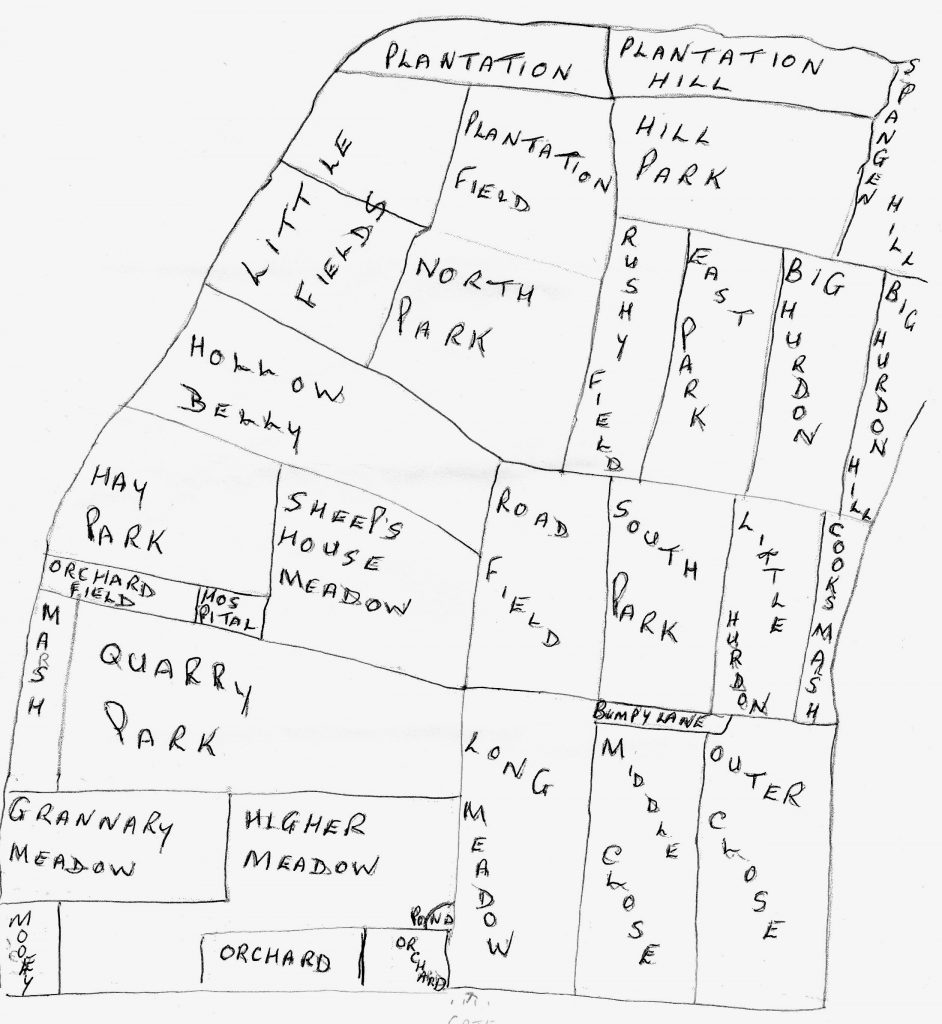
The farm (field layout above right) and the Farm buildings have been separated due to changes in agriculture and families, the buildings now being redundant to farm use. In 2000 planning permissions were sought to alter some of the existing buildings for use as workshops, some for human accommodation, and for cottages to be erected within the farmyard confines. The farmhouse, said to be one of the oldest in the area, has been refurbished and work to convert the outbuildings commenced in September 2005.
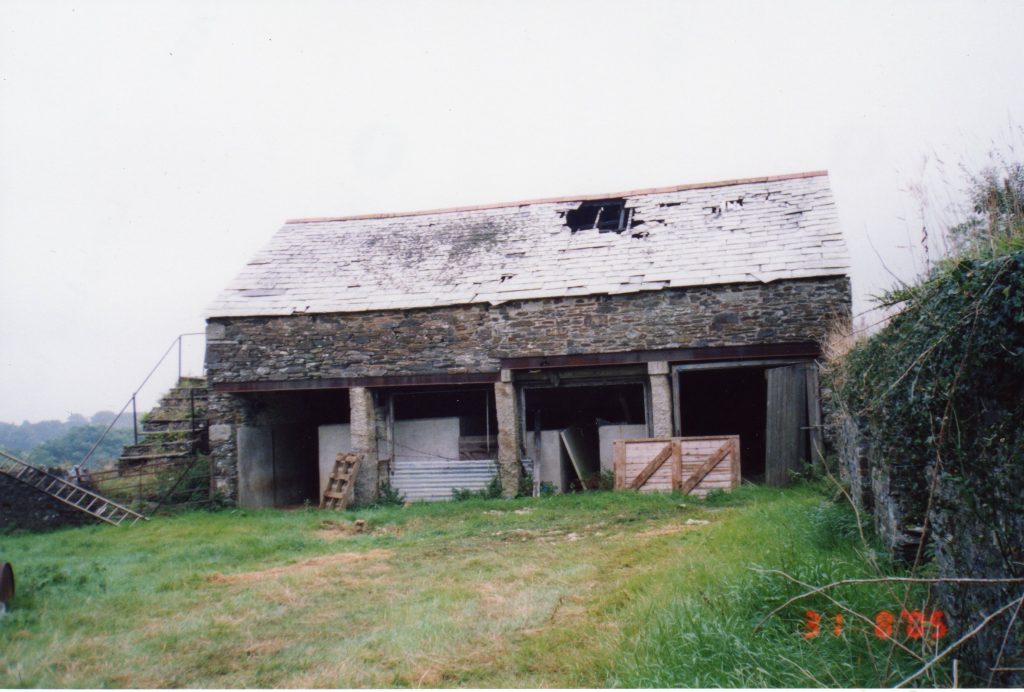
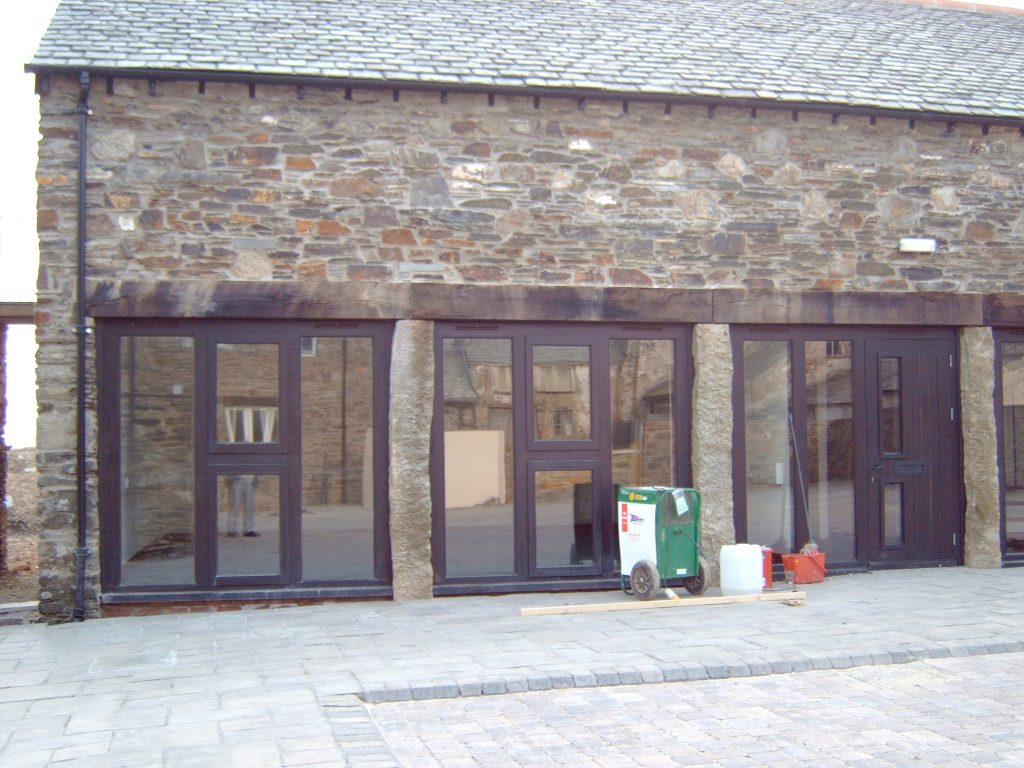
By 2008 the old farm buildings had been restored, updated and modernised and are fitted out as office space, and accommodation, complete with electric lighting, heating and all modern conveniences, and are let out to various bodies, some as workshops, some as housing. A new block of two houses occupy what was once the ‘calves house’. The old wood and galvanised iron tractor shed, propped up on granite posts, is now a smart office building containing an ultra modern computer work station. The space which once held the milk-churn stand is now paved and the space used as vehicle standings. The fields are separated but still used for agricultural purposes.
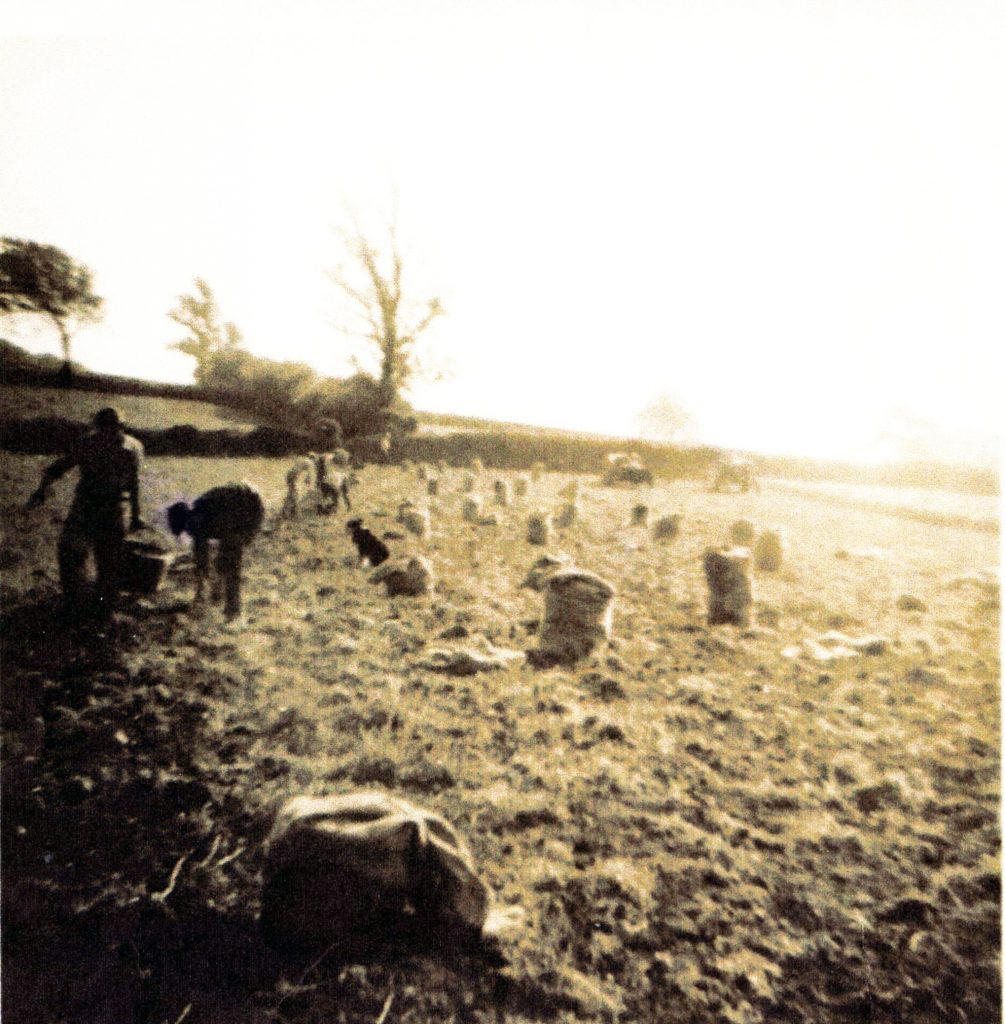
During the First World War in 1916 exhibitions organised by Lady Molesworth St Aubyn, showing the aid women could provide to the home front, took place at Scarne Farm on March 9th (below). Those that took part are: Mary Francis Vivian Lobb, Treguddick, South Petherwin: May Billing, Exwell, Linkinhorne: Miss MS Dinnis, Trecarell: Louisa Thomas, Warbstow Cross: Harriett Baker, Meadwell, Kelly: Mary E & Alberta A Wood, Sellick, Clawton: C Reddicliffe, Hill Cottage, Stowford: Letty Wood, Sea View, Tresmorn, St Gennys: Emma Butler, Tatson, Pyworthy: Mrs Burgoyne, Pendowrie, St Gennys: Mrs Hodge, St Gennys: Mary Bartlett, Tamar Villa, Tavistock Rd: Mrs Jury, Northgate St: Edith Mary Hancock, Newham, Otterham: Emily Gay, Well, North Tamerton: Mary Pearse, Higher Dizzard: Mrs Bailey, Grinnacombe, Broadwood: Mary Skitch, Rosecare: S Webber, Hill Park Cottage, North Tamerton: Mrs Toll, Grinnacombe: Beatrice Evely, Down House, Kelly.

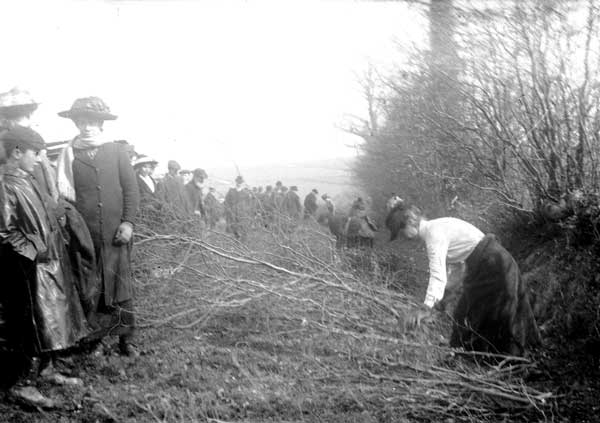
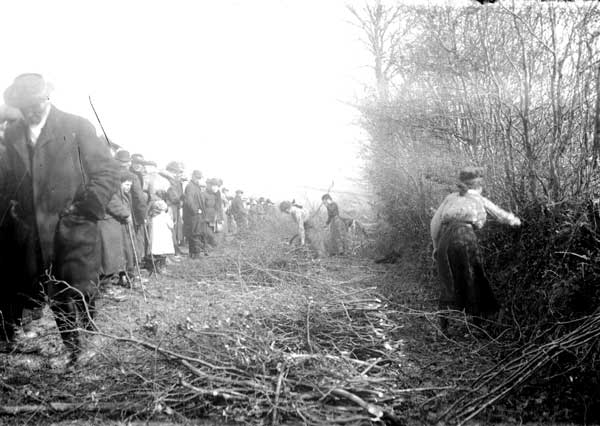
Regarding the war work of women, the Women’s Land Army, of World War One:
“Women On The Land, Their story during two world wars”; by Carol Twinch.
Page 8 – Demonstrations – “One answer came from Cornwall. According to WH Walter, Honorary Secretary of the Launceston District War Agricultural Committee, Cornish women were nettled by the farm workers’ attitude that they were not good enough to take a man’s place on the land. After a series of heated letters to local newspapers, a novel demonstration of women’s work on the land was staged at Launceston on 9 March 1916.
The demonstration caught on. The Launceston example was shortly to be followed by one in Truro, held on 7 April. The Chairman of the Cornwall WAC, Alderman Hawk, said of the Truro event: The work was most credible and astonished a number of farmers. If any criticisms were to be passed, it would be with respect to the arrangements of some of the stewards. The women, the majority of whom claim to be but learners, were required to do what could not be expected even of skilled labourers. In the ploughing class, for example, they had to start with new ploughs, stiff with paint, to open up a straight furrow through a long field, with only a single mark to aim at.”
During the Second World War Scarne again played its part with part of the land to the North being requisitioned to house the admin block of the American GI’s and later on a POW camp. These nissen huts were to provide many uses after the war, being first used as temporary homes and later providing workspaces for local businesses (below as workshops for West Regional Tractors). These were subsequently replaced with more substantial buildings for businesses such as a carpet factory, egg packing station, Mothers Pride depot, Maybridge Chemicals and Milk transport depot. Later the this was the site of the much loved Normans Cash and Carry before the whole site was purchased and redeveloped as a retail park.
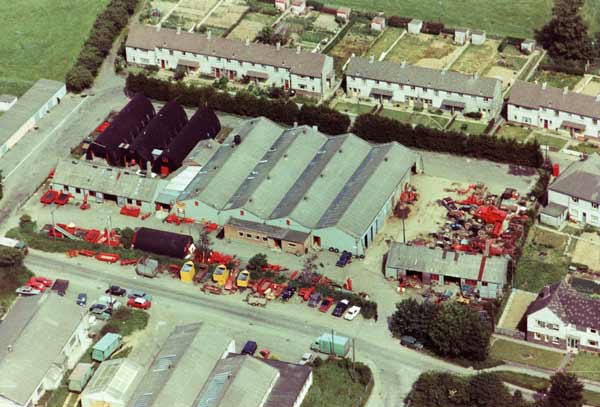
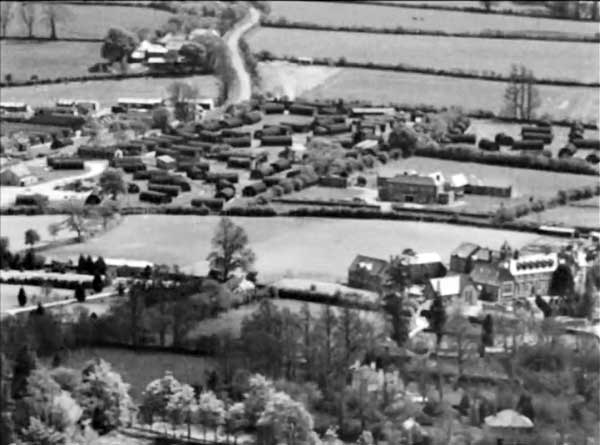
Map of Scarne pre 1974
Today the land of Scarne is farmed by the Burden family, husband of a niece of Mr Thomas Hicks, the farmhouse and buildings belong to two nieces of Mr Hicks.
Visits: 233

